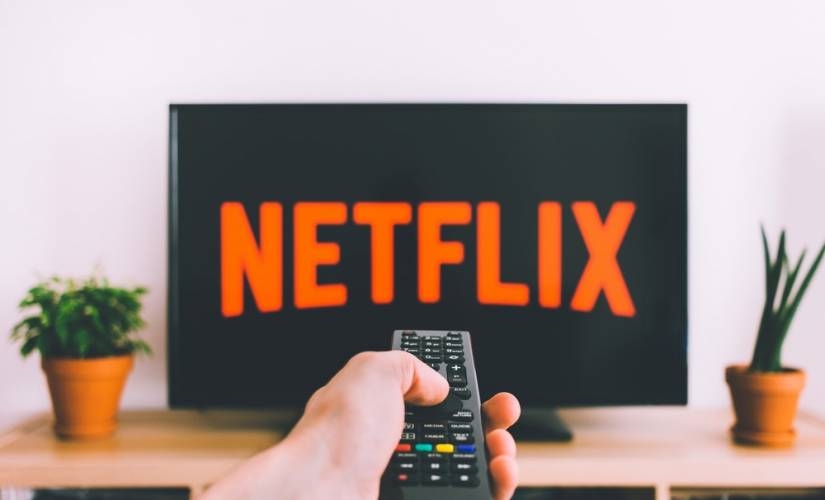Thanks Tech for Strategic Advantage on TV
Thanks Tech for Strategic Advantage on TV

It’s no secret that the internet has changed the way that people all around the world consume media. It’s been a disruption that has almost completely upended the broadcast and cable television industries and has already decimated the home movie rental industry (with the notable exception of Redbox, somehow).
The rise of the internet as a media delivery platform has also created a whole new set of priorities for marketers and advertisers.
The majority of marketer and advertisers still face decisions regarding how they’re going to transition their focus from traditional media to digital. As of today, the conventional wisdom holds that if cable and traditional broadcast media aren’t quite dead yet, they’re about to be.
Article after article claims that savvy marketers are committing brand suicide if they aren’t plowing their budgets into online advertising via Facebook, Google, and Amazon, or a variety of branded technology approaches. A closer look at the facts, however, reveals a picture that doesn’t quite match the general perception of the situation.
The reality is that the ongoing martech wave that’s helping brands to improve how they target specific demographics with customized messaging online is starting to reach traditional media as well. That’s adding a new-media flare to a decidedly old-school marketing channel, and it’s keeping traditional media viable for far longer than most observers would have predicted.
For an overview of what’s happening, here’s what marketers need to know about the death – or lack thereof – of television as a primary advertising and marketing medium, and how technology is providing options in the space that wasn’t available a few short years ago.
The walking dead.
To call traditional media anything other than an industry on the decline would be at best a deception, and at worst, an outright lie. There’s no question that digital media is and will continue to be ascendant, and that it is going to supplant broadcast and cable television as we move further into the 21st century. One look at Netflix’s subscriber count tells you everything you need to know about that particular question.
At the same time, however, calling the television ecosystem dead as an advertising and marketing vehicle is nothing short of absurd. For proof, consider that estimates indicate that by the end of 2022, 80% of American adults will still be paid television subscribers. That’s means that although television is in decline, it still possesses a reach that is unsurpassed by any other single medium.
No competent sales and marketing team can afford to ignore these stats. Instead, advertisers should focus on when and how to exploit that television reach to target specific demographics that digital still can’t deliver.
Who’s cutting the cord.
When weighing the use of television advertising in any marketing push, the key to success in the current bifurcated media environment is intelligent targeting. Getting that part of the equation right is less about who television will reach, and much more about who it cannot. That means it’s critical to understand which demographic groups fall into the “cord cutter” or “cord never” categories, for whom conventional television is not a part of their media diet.
Cord cutters, as their name implies, are individuals who have left their cable subscriptions behind and moved to digital OTT platforms to satisfy their media needs. A recent survey revealed that they are a group with an average age of 42, representing eight percent of the adult population. Critically, the group is split almost right down the middle between men and women and has an average household income of $52,000, making it a desirable, if small, demographic group.
Cord nevers, on the other hand, are a group that has never subscribed to a pay television service at any time. Their average age is 34, but that’s not representative of the group as a whole, which skews young (62% are younger than the average – it is pushed upwards by large numbers of seniors that never left broadcast television). More than half of cord nevers are a part of the Millennial generation, and with an average household income of $41,000, they’re a valuable – and growing – demographic group.
Taken together, the two groups represent some pretty desirable viewers. At the present moment, however, their total numbers haven’t risen to the point where television becomes an ineffectual marketing medium for all but a tiny slice of businesses.
The viewers that are still reachable represent the overwhelming majority of all demographic groups, and although the makeup of the ‘cord never’ group portends a huge problem for broadcast and cable companies on the horizon, it’s an issue that is nowhere close to reaching crisis levels.
Technology Begins to Improve Campaign Coordination
Even as viewership of traditional media continues to erode (little by little), the latest in AI and martech solutions are intervening to bring a whole new relevance to space for marketers everywhere. The most visible example is the recent additions that Google has made to its DoubleClick Bid Manager.
They’ve been running two beta programs that allow digital advertisers to create blended ad buys split between digital platforms and traditional television outlets. Advertisers can exercise granular control over how their blended campaign operates by defining triggers that determine when each component launches.
For example, advertisers can trigger a blitz of online ads to begin immediately after the first airing of a new TV spot, to enhance follow-up impressions or amplify reach to the aforementioned digital-only groups.
If that’s not enough, Google also expects to provide advertisers with the ability to time campaigns to real-time, unplanned live events, like a sports team winning a game, or scoring a certain number of points.
The system they’re designing should benefit from low lead times between digital and conventional platforms, as it takes just a few seconds for the platform to begin serving digital ads when a real-world trigger occurs.
To gauge efficacy, users will have access to real-time search data that shows them any shift in brand search volume before, during, and after ad performance across all mediums.
AI Brings Enhanced Targeting

Digital advertising giants like Google aren’t the only ones introducing technology that gives advertisers new ways to leverage television’s continued power and reach. Some of the television industry ‘s best-known names are getting in on the act, too.
NBCUniversal, for one, is making use of an AI-powered system known as the Contextual Intelligence Platform that aims to help advertisers auto-target ads to fit seamlessly into airing content. The goal is to make the ads less intrusive, and more relevant for viewers so they’ll be receptive to the messaging.
The system arrives at placements by combing through visual content descriptions, closed-captioning data, and program scripts to spot topical matches between ads and the shows they run in-between.
Also, proprietary algorithms work to determine the emotional content and tone of both the advertising and the shows it may be paired with to reduce inappropriate ad placements. So far, Josh Feldman, NBCU’s head of advertising and marketing creative reports that ads placed by the system have yielded 19% and 64% increases in brand and message memorability, respectively, so the early returns are excellent news for advertisers.
Putting it All Together
As technology continues to draw the worlds of digital and traditional marketing and advertising together, the possibilities for marketers are increasing, and the case for abandoning traditional media is weakening. The advances mentioned here already provide the tools required for marketers to operate true mixed-media campaigns, and present a unique value proposition that can’t be discounted.
There’s also every reason to believe that those tools will continue to evolve and become even more useful in the coming years. When you consider that the reports of television’s demise have been exaggerated by a distorted view of digital’s primacy in the 21st century, marketers have no choice but to reevaluate their plans and recognize that for large swaths of the population, it’s still a television world – and the internet is just living in it.
The post Thanks Tech for Strategic Advantage on TV appeared first on ReadWrite.
(22)


